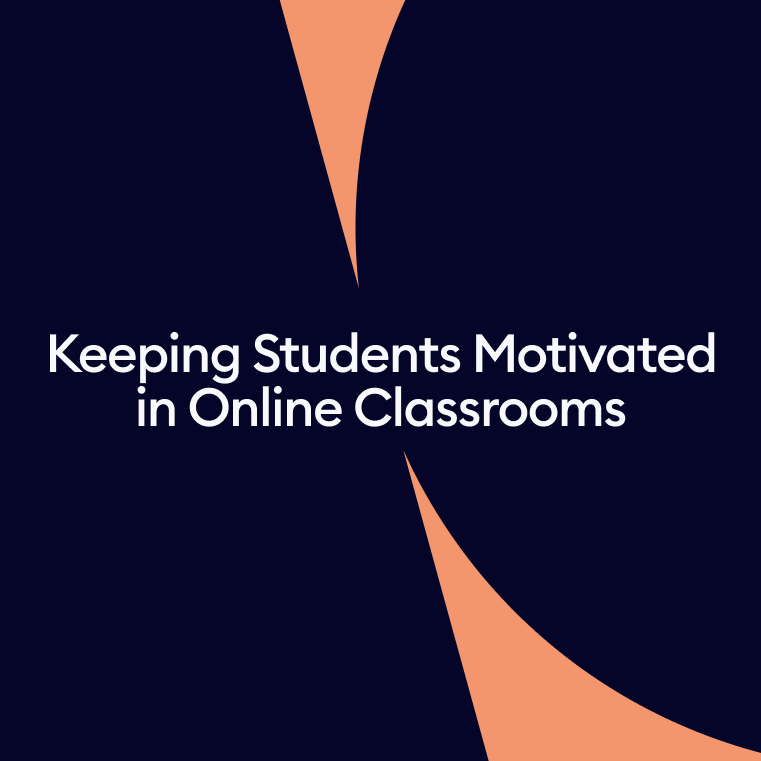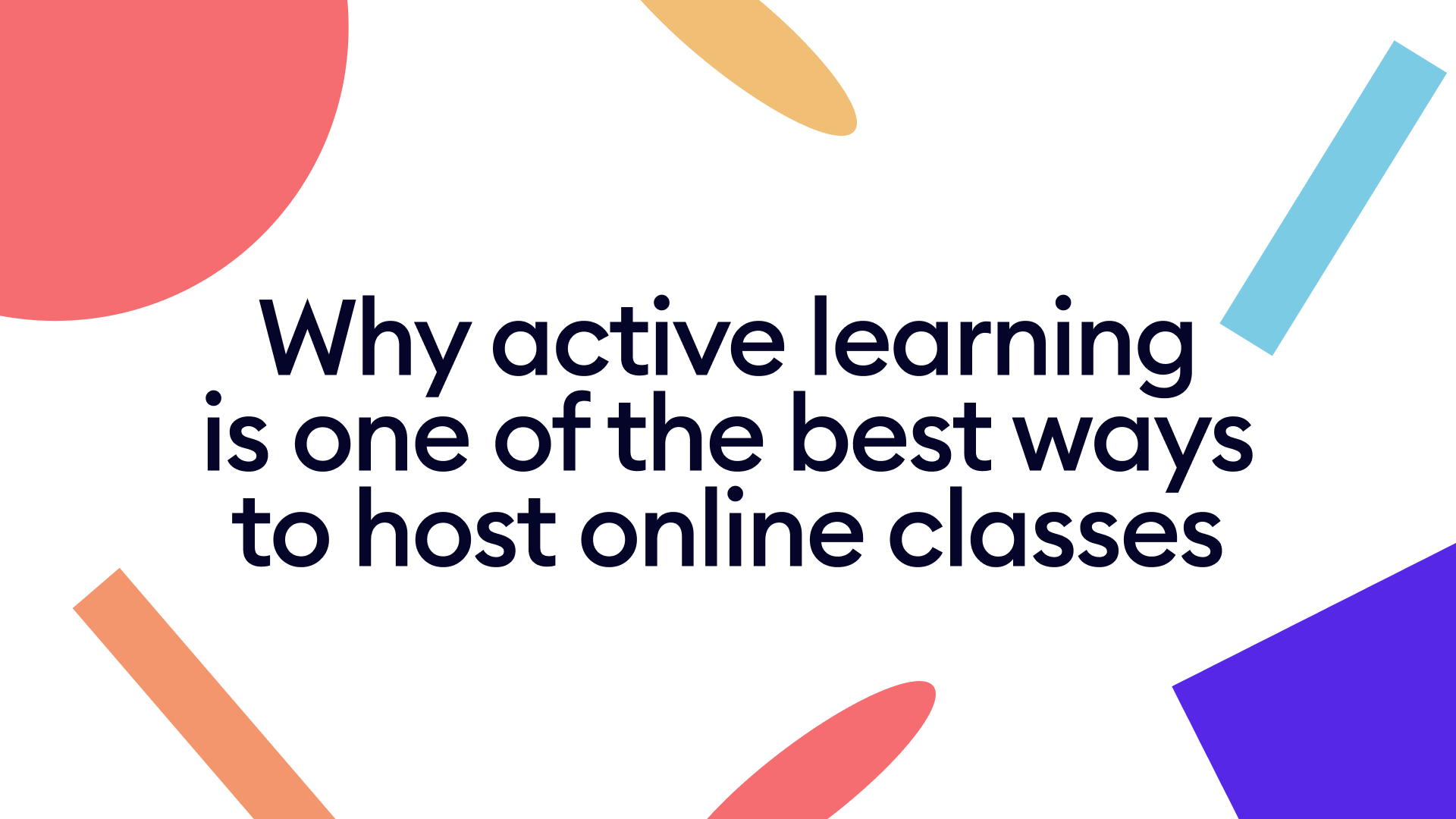Keeping Students Motivated in Online Classrooms
This concise guide offers practical solutions to tackle this issue head-on. Whether you're a seasoned educator navigating the digital landscape or a newcomer seeking insights into online learning dynamics, our goal is to provide actionable strategies for keeping students engaged and motivated.

When students lose motivation, problems ensue, declining participation, reduced academic performance, and a less productive learning experience. Without the physical interaction and immediate feedback of traditional classrooms, online learning can lead to a motivated student feeling isolated, making the platform susceptible to waning enthusiasm and distractions.
This concise guide offers practical solutions to tackle this issue head-on. Whether you're a seasoned educator navigating the digital landscape or a newcomer seeking insights into online learning dynamics, our goal is to provide actionable strategies for keeping students engaged and motivated.
Overcoming Motivational Challenges
Teachers are not merely educators; they are also motivators and guides. They play a crucial role in helping students overcome challenges that erode their motivation, particularly in the classroom setting—physical or digital. Motivation factors become evident as we delve deeper into strategies, underscoring that teachers are at the heart of the process.
- Procrastination: Some demotivated students might multitask, check social media, or get easily distracted, showcasing a lack of focus. This lack of concentration hampers their ability to absorb information, highlighting the need for motivation strategies.
- Communication Breakdown: In online environments, understanding how to motivate revolves significantly around communication. When demotivated, students may avoid emails, messages, or virtual office hours, leading to a breakdown in communication that further isolates them from the learning process.
- Burnout: Student burnout, a dire issue often connected to a lack of motivation for studies, emerges from prolonged stress, excessive workload, and feelings of hopelessness. Recognizing signs like chronic fatigue, dwindling enthusiasm, and emotional exhaustion is vital.
Factors contributing to burnout include increased responsibilities, heavier workloads, and the self-directed nature of online courses, particularly asynchronous ones. These demands, combined with personal responsibilities, create a significant strain, causing students to struggle with time management and increased stress, leading to burnout. While some students thrive in a remote learning environment, many face heightened challenges, especially those balancing work and family obligations.
The Cougar Chronicle, California State University
- Reduced Academic Performance: Demotivation often correlates with a dip in academic performance. Whether it's students in high school or those for college, individuals who were once diligent might start submitting subpar work, signaling the importance of timely intervention.
- Lack of Engagement: A visible sign of student demotivation is a drop in engagement. Students need motivation, especially in middle and high school, which entails active participation in discussions and prompt completion of assignments. A decline in this active involvement is indicative of waning motivation.
Recognizing these signs is pivotal for medical educators and others, empowering them to intervene early. By offering encouragement for learning, they can reignite the spirit of student success. We'll explore methods to address these challenges as we progress, rekindling students' motivation in online classrooms.

Student Motivation Strategies
Student motivation is essential, both in the classroom and in online settings. This shared responsibility rests on both educators and learners. While teachers pave the way, creating an environment that fosters motivation for learning, students must adopt strategies to sustain their enthusiasm and drive. In this section, we delve into these techniques, also highlighting the role of motivational videos, quotes, and songs:
Setting Clear Goals and Priorities
To study hard and effectively, establishing clear and achievable goals is the first step. Students, whether for college or for highschool, should set academic objectives. This process directs them to prioritize tasks and craft a student success roadmap.
Result: Students feel grounded with a clear sense of purpose, aiding them to stay a motivated learner.
Time Management and Organization
Proper time management bolsters the motivation students require in online scenarios. Harnessing tools like digital calendars, and staying organized is pivotal. Students can allocate time for academic and personal endeavors, ensuring they remain on track.
Result: With structured schedules, students can navigate their coursework seamlessly, elevating their student success rate.
Self-discipline and Motivation Boosters
Digital learning often demands self-discipline. In addition to creating study spaces or using the Pomodoro technique, students can explore online communities and resources. They can also watch motivational videos, read motivational quotes, or listen to motivational songs.
Result: Such a well-rounded approach makes students feel engaged and a motivated learner throughout their course.
Active Participation
This is a core aspect of motivation. Encouraging active participation, especially in classroom discussions, fosters a richer learning experience.
Result: An inspirational classroom environment is established where students eagerly engage.
Motivational Quotes, Songs, Speeches, and Posters
Leveraging motivational resources can uplift and inspire. Incorporating motivational posters, quotes, and songs can provide that daily dose of inspiration.
Result: Such resources create a nurturing learning environment, helping students to stay a motivated learner.
Adopting a combination of these techniques can provide students with the necessary tools to navigate online education effectively. By understanding how to motivate oneself, and with the support of educators, students can thrive in their academic journeys.
